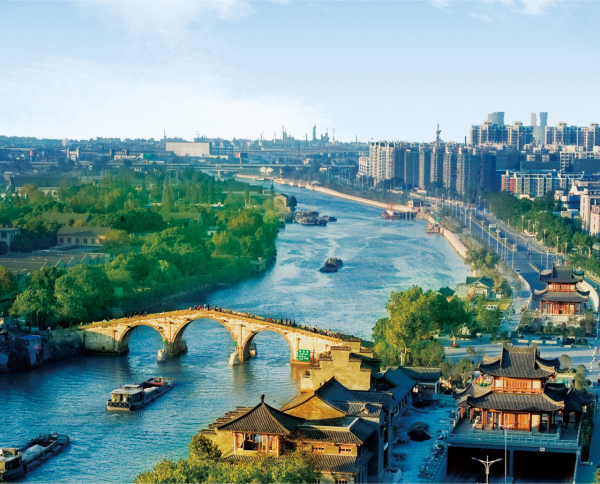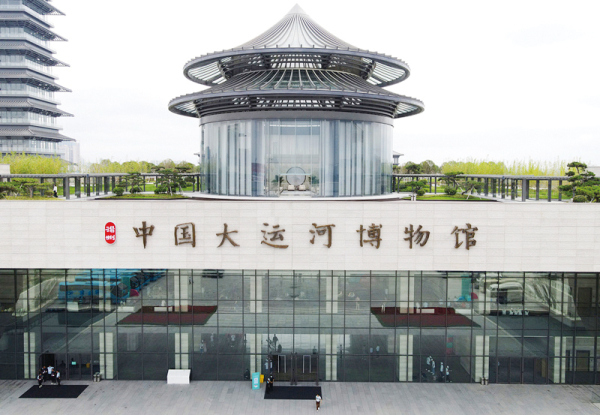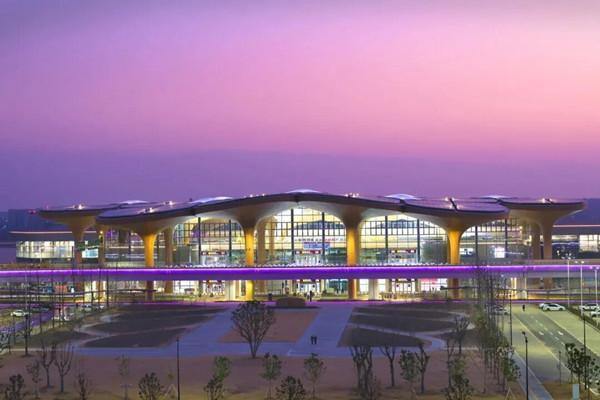
The Grand Canal of China, alternatively known as the Jing (Beijing)-Hang (Hangzhou) Grand Canal or the South-North Grand Canal, was first dug in the year 486 BC. Running for over 2,700 kilometers, it consists of three parts: the Sui-Tang Grand Canal, the Jing-Hang Grand Canal, and the Eastern Zhejiang (Zhedong) Canal. The canal is the world’s longest constructed waterway and the largest and most extensive water conservancy project in ancient China.
Starting from Beijing in the north, it passes through the city of Tianjin and the provinces of Hebei, Shandong, Jiangsu, and Zhejiang before ending in the city of Hangzhou in the south, connecting the Haihe River, the Yellow River, the Huaihe River, the Yangtze River, and the Qiantang River. In the east, the canal reaches the East China Sea via the Eastern Zhejiang Canal. The Grand Canal was a major waterway connecting East China with the interior river system and linking the south with the north. It also served the functions of irrigation, flood control, and drainage, and has played an important role in the political, economic, military, and cultural development and foreign exchanges of successive dynasties.

In 486 BC, Fu Chai (?-473 BC), king of the State of Wu (ca. 12th century-473 BC), dredged the ancient waterway passing from Suzhou to Yangzhou via Wuxi and Changzhou, to realize his military ambition of conquering the Central Plains. Meanwhile, work began on the construction of a canal, which later was known as Han Gou (literally “Han Conduit” or Han Canal), from the south of Yangzhou to the north of Huai’an in Jiangsu).
Over a thousand years later, in the year 605, Emperor Yang (569-618) of the Sui dynasty (581-618) ordered the Tongji Canal to be dug. The canal, alternatively known as the Bian Canal, was the main waterway for Caoyun (tribute grain transport). He then ordered the opening of the Yongji Canal, which was able to connect with the cities of present-day Tianjin and Beijing in the north. In 610, the Jiangnan Canal was built, which started from Zhenjiang in Jiangsu, via Wuxi, Suzhou, before reaching Jiaxing and Hangzhou in Zhejiang and ultimately the Qiantang River. By then, a canal system centered around Luoyang and consisted of the Yongji Canal, the Tongji Canal, the Han Canal, and the Jiangnan Canal had been in place, extending to Hangzhou in the south and Beijing in the north.

The Tang dynasty (618-907) mainly improved canal lock efficiency, apart from minor changes made to the canal to cut down on travel time, but there were no fundamental differences between the Sui Grand Canal and the Tang Grand Canal. During the Song dynasty (960-1279), a double-gate system known as the pound lock was invented, which allowed boats to pass through safely, and shipping capacity was increased as well.
To improve the Caoyun system, the Yuan (1206-1368) government started to dig the Jizhou Canal and later the Huitong Canal, which enabled Caoyun boats to reach Tongxian county near the capital Beijing. From 1291 to 1293, the Yuan government built the Tonghui Canal, linking Tongxian county directly with the center of Beijing. The general shape of the Grand Canal as we know it today took shape at that time.
The Ming (1368-1644) and Qing (1616-1911) dynasties both expanded the Grand Canal. Then in 1855, heaving flooding of the Yellow River changed its course and severed the Grand Canal at Shandong province. From then on, the canal largely fell into disrepair despite calls to renovate it in late Qing and during the Republican period (1912-1949). After the founding of the People’s Republic of China, efforts have been continuously made to restore and expand the Grand Canal. For example, the project to expand and reconstruct the Jining-Hangzhou section has begun, which when completed will see shipping lanes further widened through dredging. At the same time, it will also facilitate traveling from the Grand Canal to the Qiantang River and expand the port handling capacity.
With a total length of 239 kilometers, the extension section of the Grand Canal into the sea, known as the Eastern Zhejiang Canal, starts from Xixing Street, Binjiang district of Hangzhou in the west, crosses the Cao'e River, passes through Shaoxing, and ends at the mouth of Yongjiang River, Ningbo in the east. As an important link between the land-based Silk Road and the Maritime Silk Road, its history can be traced to the Ancient Shanyin Canal dug by the State of Yue (2032-222 BC) during the Spring and Autumn Period (770-476 BC). The Eastern Zhejiang Canal is one of the only two extant canals on record from the pre-Qin (before 221 BC) period and is still the main waterway for navigation, flood discharge, and irrigation in the Ningbo-Shaoxing Plains.
As the world’s longest and oldest man-made waterway, and the world’s largest and most extensive civil engineering project prior to the Industrial Revolution, the Grand Canal greatly promoted China’s north-south exchanges, consolidated its political unification, and fostered its ethnic unity, on top of the apparent transportation, economic and social benefits it had brought. The canal is a show of the Chinese people’s wisdom, determination, and courage, as well as an eastern civilization’s outstanding achievements in the fields of water conservancy and water management. It can be said that the Grand Canal is the result of mutual adaptation and mutual transformation between ancient Chinese people and nature that enabled their mutual success.
A major transportation artery between the north and the south, especially during the Ming and Qing periods, the Grand Canal played a significant role in China’s cultural exchanges with foreign countries as well. Some foreign envoys, missionaries and travelers frequently took the route.
In the late 1200s, Marco Polo, one of the very first foreign travelers to introduce China to Europe, recorded many of his trips to the canal cities. Indeed, of those who later came to China, a large number followed his steps.
A Sulu King named Paduka Pahala sailed from the Philippines to Imperial China in 1417. Their 340-strong delegation arrived in Hangzhou after landing in Quanzhou, Fujian province. They then journeyed northward for two and half months along the Grand Canal before reaching Beijing. His delegation was said to have made a strong impression on the Chinese emperor, who made him the most important guest at that time. Unfortunately, he contracted some disease and died in Dezhou, Shandong province, on his way back home. He was buried at the place and a monument was built for him.
In the 16th century, the Italian Jesuit Matteo Ricci used to travel on the Grand Canal, and he seemed to be more interested in its transportation: … the Chinese appear to prefer bricks over stones, and the bricks for the imperial palace are most likely brought in on ships some 1,500 miles away, for which many ships have worked day and night …
Then in 1793, that infamous Macartney mission from the British Empire aimed to facilitate British trade with the Qing. The British delegation boarded their ships in Tongzhou, Beijing after an audience with the emperor (Emperor Qianlong) and followed the Grand Canal for 33 days all the way to Hangzhou.
The water conservancy projects, the towns and villages along the canal as well as the local customs left a deep impression on many foreigners, which have been reflected in their works. Their observations and descriptions can undoubtedly help deepen our understanding of the Grand Canal.
One such example is Ch’oe Pu (1454-1504), a Korean official known for his travel diary in Ming China after he survived a shipwreck near the coast of Zhejiang. Piao Hai Lu (or A Record of Drifting Across the Sea), as his diary was titled, recorded in detail the transportation of the Grand Canal and the social customs along the way.
Another is Sakugen Shūryō (1501-1579), a Japanese Zen Buddhist monk, a poet, and diplomat in the Muromachi period. He was the vice envoy and the chief envoy of the Japanese missions in 1539 and 1547 to the Chinese imperial court in Beijing. During his time in China, he has traveled multiple times along the Grand Canal, and he put his experiences into several poem collections, such as Ru Ming Ji (Record of My Journey to Ming China), which have become important documents in history of Sino-Japanese relations.

The first Jing-Hang Grand Canal International Poetry Conference opened in April 2017 at Qiaoxi Historical and Cultural District





